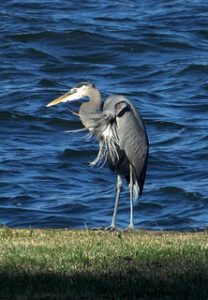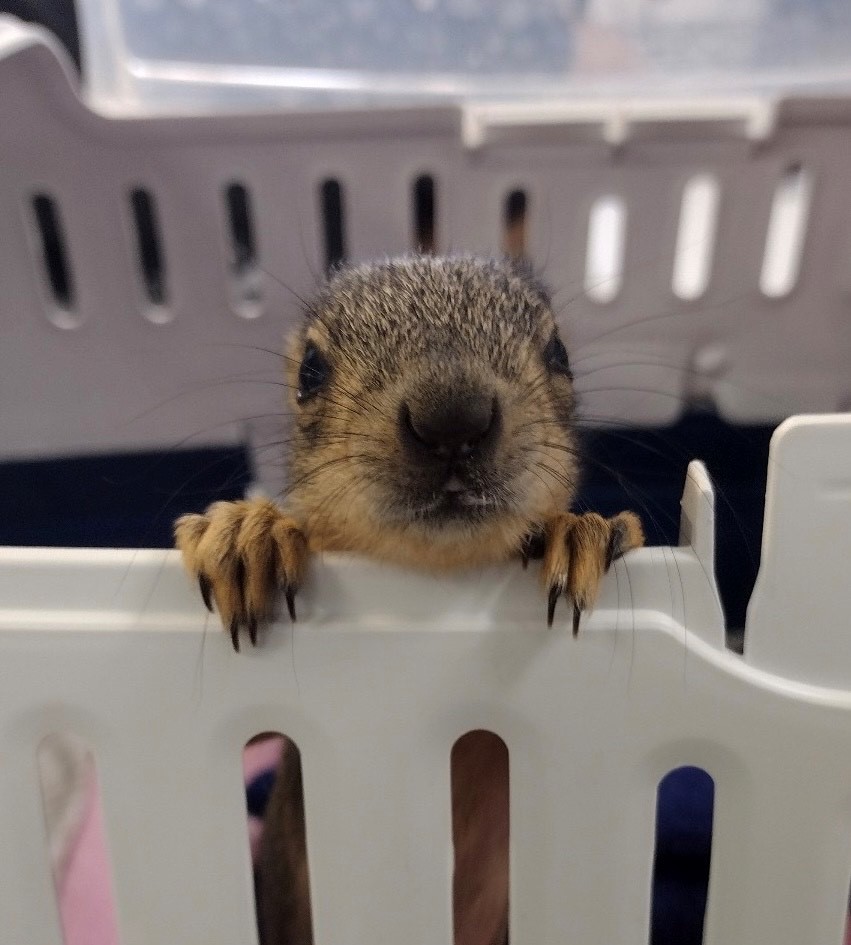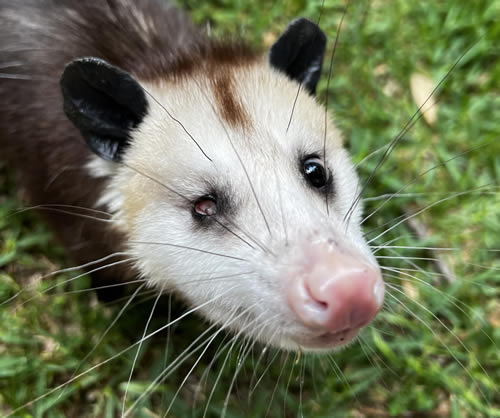By: Kylie del Castillo, TWRC Wildlife Intern
 When I was little, my grandmother, Babs, would take us outside early in the morning to watch the nature around our lake house wake for the day. We would see flocks of purple martins flying overhead or flying fish jumping high out of the water. It was all incredible, though, one animal always stood out to me in particular—the Great Blue Heron. “There goes Harry the Heron,” Babs would say as we watched him fly low above the water or perch on the bulkhead. Every time Babs would see a heron, her eyes would light up as she watched in awe of the beautiful bird; Babs loved this bird so much that we even named that lake house “The Blue Heron.”
When I was little, my grandmother, Babs, would take us outside early in the morning to watch the nature around our lake house wake for the day. We would see flocks of purple martins flying overhead or flying fish jumping high out of the water. It was all incredible, though, one animal always stood out to me in particular—the Great Blue Heron. “There goes Harry the Heron,” Babs would say as we watched him fly low above the water or perch on the bulkhead. Every time Babs would see a heron, her eyes would light up as she watched in awe of the beautiful bird; Babs loved this bird so much that we even named that lake house “The Blue Heron.”
Of course, I never appreciated the Heron as much as my grandmother did. I would just roll my eyes and think to myself how silly Babs was being—obsessing over some bird. As I have grown older, though, I have truly come to appreciate and love birds, specifically the Great Blue Heron. Not only are they amazing animals, but they are extremely important to their environment’s health and wellbeing.
The Great Blue Heron (Ardea horiadis) is the largest species of heron in North America, with a wingspan of over six feet that helps it coast across the water looking for food. The blue heron can either plunge for its prey in deep water, or stalk it slowly in the shallows. These birds can hunt both day and night as they have a high percentage of rod-type photoreceptors in their eyes that improve their night vision.
As the top predator in the aquatic food web, herons eat a wide array of food, including small fish, aquatic insects, snakes, and even other birds. Herons live in a variety of aquatic environments ranging from marshes to ponds to the edges of rivers and lakes. Their nests are usually found in trees or shrubs near the water as high up as seventy meters, which is about 230 feet! Although they forage in solitude, they do nest in colonies.
Often, Great Blue Herons are a great indicator of the health of the environment they live in. As a top predator, they are considered a keystone species, which is a species upon which other animals in an ecosystem largely depend on. As mentioned, herons occupy many different habitats, so if there is a lack of herons in the ecosystem, it could mean that 1) there is now an overpopulation of its prey (e.g. fish, snakes, lizards, frogs) or 2) that there is a lack of prey (which caused the herons to move on to a different location). Both of these situations can be detrimental to the environment:
First, overpopulation of primary consumers, like fish, causes extreme competition for food sources within the environment since their populations are not controlled by a predator, potentially leading to scarcity or even the extinction of competing primary consumers in that specific area.
Secondly, if there is a lack of primary consumers (or prey in general), the ecosystem will have a hard time rebuilding, as it has lost both key predators and prey.
Currently, the blue herons’ population status is in great condition; they are protected under the United States Migratory Bird Treaty Act, which prevents the killing, capturing, selling, trading, and transport of these animals as well as their feathers and eggs too. Their biggest threat as of now is habitat destruction. Wetlands, the heron’s most common habitat, are often seen as land that could potentially be used for housing, offices, and other buildings that benefit the economy. However, the wetlands already provide a significant impact on the economy as they offer improved water quality, flood control, and recreational activities.
As I grew up, I was able to watch these majestic birds from the porch of my grandmother’s lake house. This past summer, my grandparents made the hard decision to sell their lake house, which means no more good morning welcomes from Harry the Heron. I will miss the long conversations I had with Babs about him and the other birds that would come by for a quick break from their journey that day. I will always cherish having coffee with my grandmother and the serene moments spent by the lake where I learned so much about the birds I would hope to work with in the future.
Thank you, Babs, for instilling in me a love for birds and nature of all kinds.


